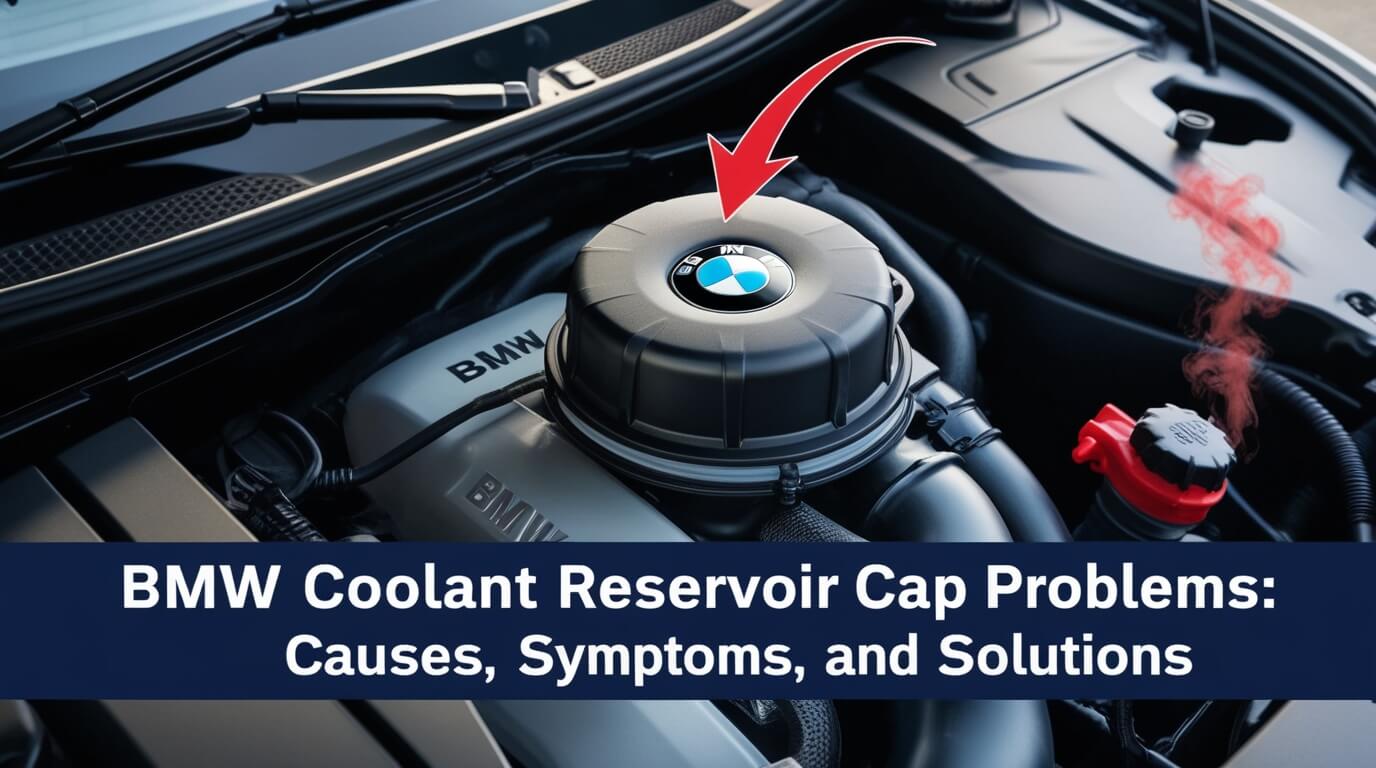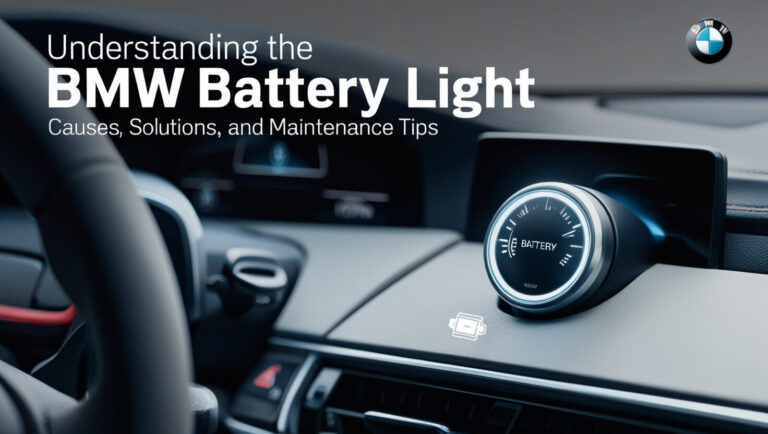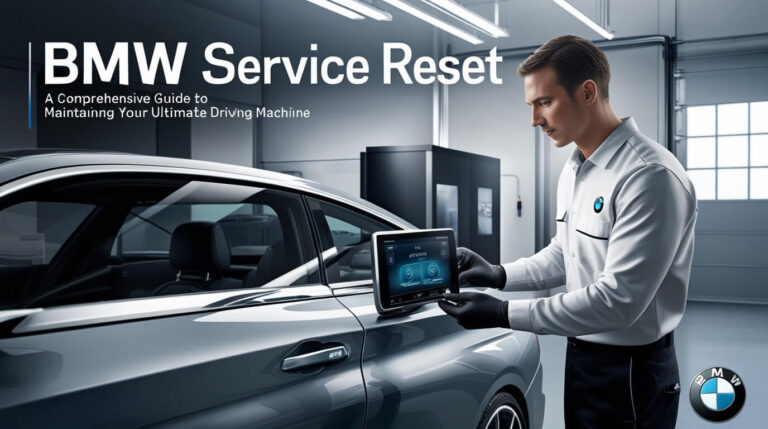
BMW coolant reservoir cap problems can lead to serious engine issues if left unchecked. These problems often manifest as coolant leaks, engine overheating, or pressure loss in the cooling system. In this comprehensive guide, we’ll explore the causes, symptoms, and solutions for BMW coolant reservoir cap issues, helping you keep your Ultimate Driving Machine running smoothly.
Understanding the BMW Coolant System
Before diving into specific cap problems, let’s take a quick look at how BMW’s cooling system works.
Components of the cooling system
BMW cooling systems typically include:
- Radiator
- Water pump
- Thermostat
- Coolant hoses
- Expansion tank (coolant reservoir)
- Coolant reservoir cap
Role of the coolant reservoir
The coolant reservoir, also called an expansion tank, serves several important functions:
- Stores excess coolant
- Allows for thermal expansion of coolant
- Provides a convenient point for coolant level checks
- Helps maintain proper system pressure
Function of the coolant reservoir cap
The coolant reservoir cap might seem simple, but it plays a crucial role:
- Seals the cooling system
- Maintains proper pressure
- Regulates coolant flow between the reservoir and the engine
- Allows for pressure relief when needed
Common BMW Coolant Reservoir Cap Issues
Now that we understand the basics, let’s look at some common problems that can affect BMW coolant caps.
Wear and tear
Over time, the cap’s components can wear out:
- Rubber seals may crack or degrade
- Spring mechanisms can weaken
- Plastic parts might become brittle
Faulty seals
A damaged seal is one of the most common culprits behind coolant cap problems:
- Can lead to pressure loss
- May allow coolant to escape
- Might let air enter the system
Incorrect cap pressure rating
Using the wrong pressure rating can cause issues:
- Too low: system won’t maintain proper pressure
- Too high: may cause hoses to burst or seals to fail
Manufacturing defects
While rare, some caps may have factory defects:
- Improper fit
- Faulty pressure relief valves
- Substandard materials
Symptoms of a Bad BMW Coolant Reservoir Cap
Spotting the signs of a failing coolant cap early can save you from costly repairs down the road.
Coolant leaks
One of the most obvious signs:
- Puddles under the car
- Low coolant levels
- Sweet smell around the engine bay
Engine overheating
A faulty cap can lead to overheating:
- Temperature gauge climbing into the red zone
- Steam from under the hood
- Engine performance issues
Low coolant levels
Consistently low coolant could point to a cap problem:
- Need to frequently top up coolant
- Low coolant warning light on the dashboard
- Visible drop in reservoir level
Pressure loss in the cooling system
A cap that can’t maintain pressure will cause issues:
- Soft or collapsed radiator hoses
- Poor cooling efficiency
- Potential for air pockets in the system
Steam from the engine bay
If you see steam, it’s time to investigate:
- Could indicate boiling coolant
- Might be due to pressure loss
- Sign of a serious overheating problem
Diagnosing BMW Coolant Reservoir Cap Problems
Proper diagnosis is key to solving coolant cap issues effectively.
Visual inspection
Start with a good look:
- Check for cracks or damage
- Look for signs of coolant residue
- Examine the cap’s seals and springs
Pressure testing
A pressure test can reveal cap issues:
- Use a cooling system pressure tester
- Check if the cap holds pressure
- Compare results to manufacturer specifications
Coolant level monitoring
Keep an eye on your coolant levels:
- Check when the engine is cold
- Look for consistent drops in level
- Note any fluctuations between hot and cold
Temperature gauge observations
Your dashboard can provide valuable info:
- Watch for unusually high temperatures
- Note any fluctuations during normal driving
- Be alert for overheating warnings
Consequences of Ignoring Coolant Cap Issues
Neglecting coolant cap problems can lead to serious consequences.
Engine damage
Overheating can cause severe damage:
- Warped cylinder heads
- Blown head gaskets
- Cracked engine blocks
Reduced cooling system efficiency
A faulty cap makes your cooling system work harder:
- Increased wear on components
- Higher fuel consumption
- Reduced engine performance
Increased risk of breakdowns
Cap issues can leave you stranded:
- Sudden overheating
- Loss of coolant
- Engine failure
Higher repair costs
Fixing a small cap problem now can save big money later:
- Avoid expensive engine repairs
- Prevent damage to other cooling system components
- Maintain your BMW’s resale value
Replacing a Faulty BMW Coolant Reservoir Cap
When the time comes, replacing your coolant cap is a straightforward process.
When to replace the cap
Consider replacement if:
- The cap is more than 4-5 years old
- You notice any of the symptoms we’ve discussed
- The cap fails a pressure test
Choosing the right replacement cap
Getting the correct cap is crucial:
- Use OEM or high-quality aftermarket parts
- Ensure the pressure rating matches your BMW model
- Consider upgrading to a more durable cap if available
Step-by-step replacement guide
Here’s a quick overview of the replacement process:
- Wait for the engine to cool completely
- Locate the coolant reservoir
- Slowly remove the old cap (be cautious of residual pressure)
- Clean the reservoir neck
- Install the new cap, ensuring it’s properly seated
- Check coolant levels and top up if necessary
Professional vs. DIY replacement
While cap replacement is often a DIY job, consider professional help if:
- You’re not comfortable working on your car
- Other cooling system issues are present
- You need to diagnose underlying problems
Preventing BMW Coolant Reservoir Cap Problems
An ounce of prevention is worth a pound of cure, especially with BMWs.
Regular maintenance checks
Make coolant system checks part of your routine:
- Inspect the cap visually every oil change
- Check coolant levels monthly
- Have the cooling system professionally serviced as recommended
Proper cap handling
Treat your coolant cap with care:
- Don’t overtighten when closing
- Avoid dropping or damaging the cap
- Keep the cap clean and free of debris
Using the correct coolant
The right coolant matters:
- Use BMW-approved coolant
- Avoid mixing different types of coolant
- Maintain the proper coolant-to-water ratio
Addressing cooling system issues promptly
Don’t ignore warning signs:
- Investigate any unusual temperatures
- Fix small leaks before they become big problems
- Keep an eye on coolant consumption
Frequently Asked Questions about BMW Coolant Reservoir Caps
Let’s address some common questions BMW owners have about coolant caps.
How often should I replace my BMW coolant reservoir cap?
While there’s no set interval, consider replacement:
- Every 4-5 years as preventive maintenance
- When you notice any symptoms of failure
- If the cap fails a pressure test
Can I drive with a faulty coolant cap?
It’s not recommended:
- Risk of overheating is high
- Could lead to engine damage
- May leave you stranded
Are aftermarket coolant caps safe for BMWs?
Quality matters:
- Stick to reputable brands
- Ensure correct pressure rating
- OEM caps are often the safest choice
What’s the difference between various pressure ratings?
Pressure ratings affect system performance:
- Higher ratings allow for higher coolant temperatures
- Must match your BMW’s specifications
- Using the wrong rating can cause system damage
How do I know if my coolant cap is the right one for my BMW model?
Check these sources:
- Your BMW’s owner’s manual
- A reputable parts dealer
- BMW dealership parts department
Conclusion
BMW coolant reservoir cap problems might seem minor, but they can have major consequences for your engine’s health and performance. By understanding the signs of a failing cap, knowing how to diagnose issues, and taking prompt action when problems arise, you can keep your BMW running cool and avoid costly repairs.
Remember, regular maintenance and attention to detail are key to preserving your Ultimate Driving Machine. Don’t overlook the humble coolant cap – it’s a small part that plays a big role in your BMW’s cooling system. Stay proactive, stay informed, and enjoy many more miles of driving pleasure in your BMW.






